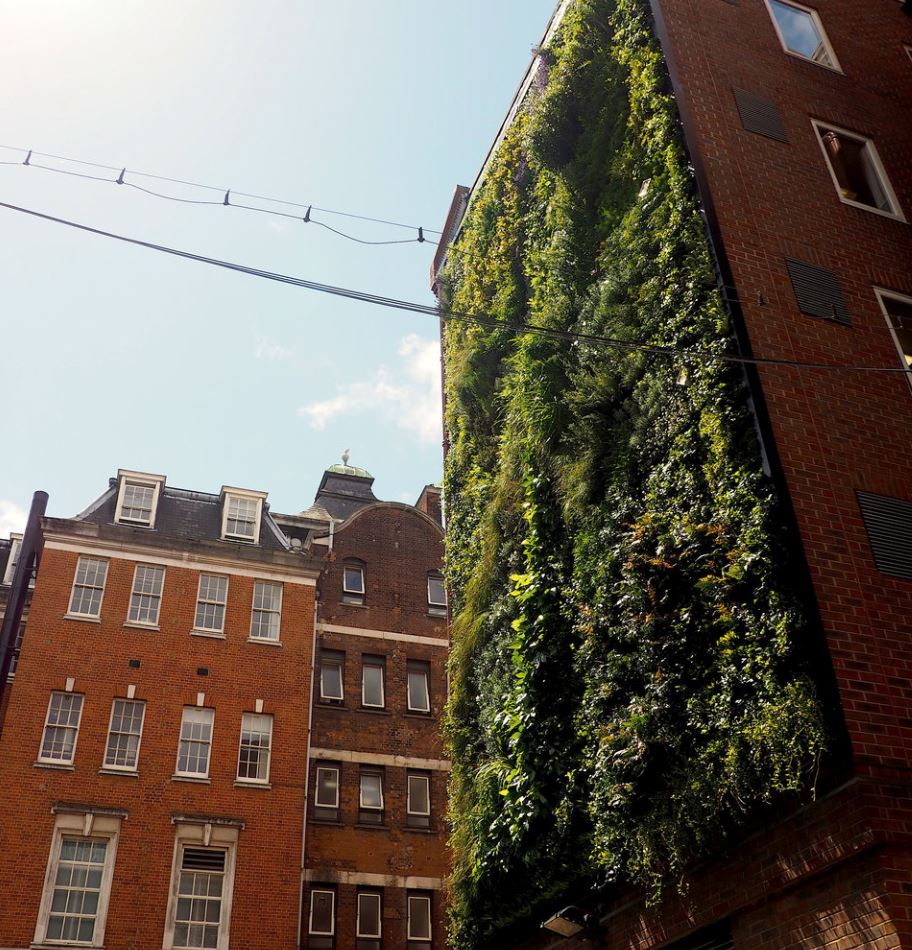The living wall is a pioneering project designed to filter air at the campus and enhance biodiversity. It contains 73 native and non-native species, and the plants have been carefully curated to provide year-round biodiversity impact. This includes 30 Royal Horticultural Society (RHS) approved flowering species and 18 RHS approved pollinating species, which are proven to support an increased insect population. The wall is also designed to improve air quality, with variations in plant size allowing for air movement to pass through the foliage, which acts as an urban air filter. Plants with hairy, waxy or sticky leaves trap particulates like PM10 and PM2.5 and hold them until they are washed away by rain. The appearance of the wall is likely to change throughout the year, with different plants flowering, and species naturally evolving around the wall.
These are some of the plants you can spot on the wall: lavender, rosemary, holly, strawberry trees, sage, wildflowers, honeysuckle and sword ferns. The living wall is also home to several bird boxes, insect boxes, and even a bat box.
Rainwater from the rooftop will be collected and circulated through the wall to irrigate the plants, and the fyto-textile system that holds the plants allows the water to be distributed evenly through the living wall.
The living wall was funded through the Mayor of London’s Air Quality Business Fund, which has awarded £200,000 to create a Business Low Emissions Neighbourhood in the London Bridge area. The initiative is led by Team London Bridge and Better Bankside, and the Guy’s and St Thomas’ Charity, who own Orchard Lisle, will support the upkeep of the living wall.
To read more about the living wall, and to see the full planting plan, visit Team London Bridge.



